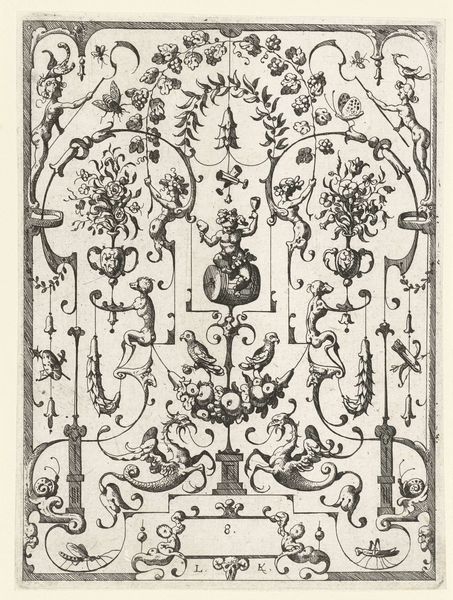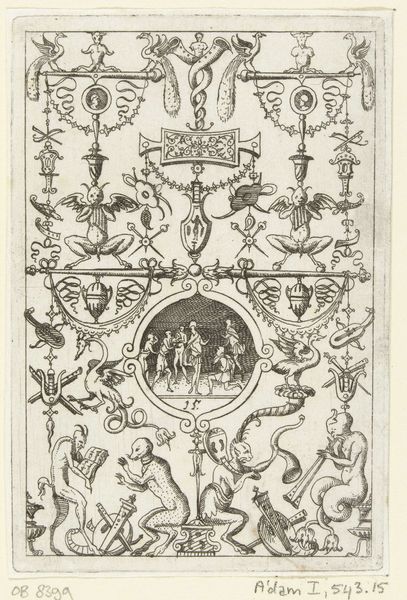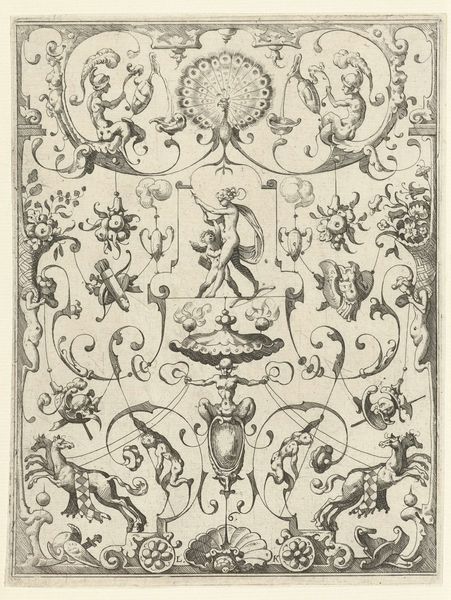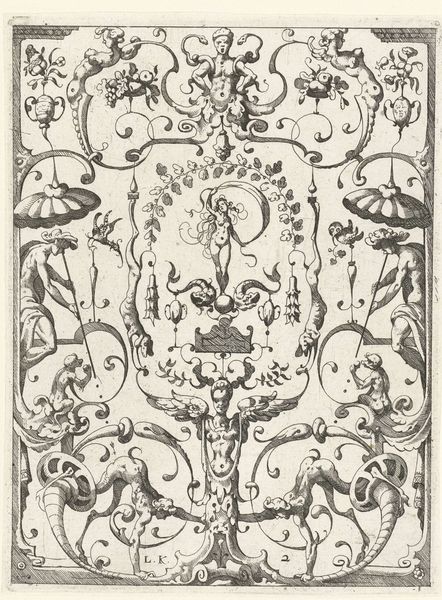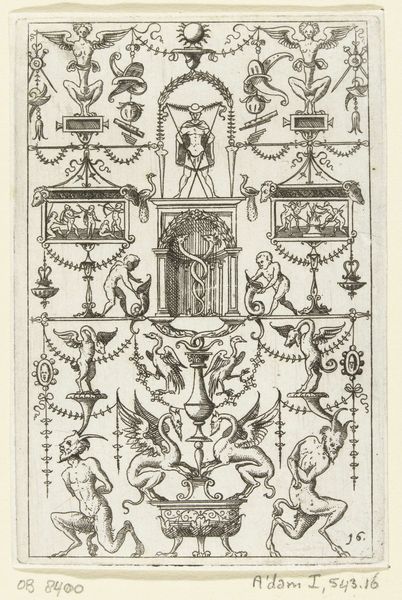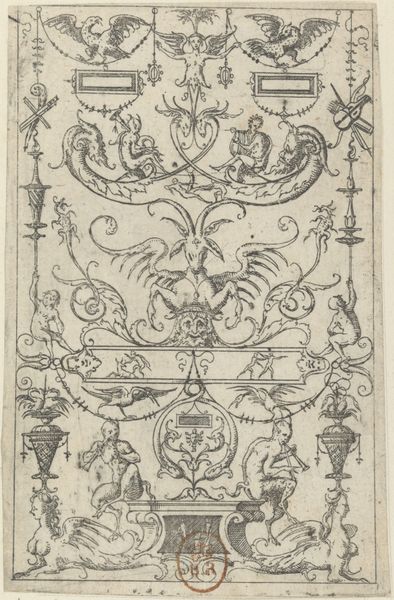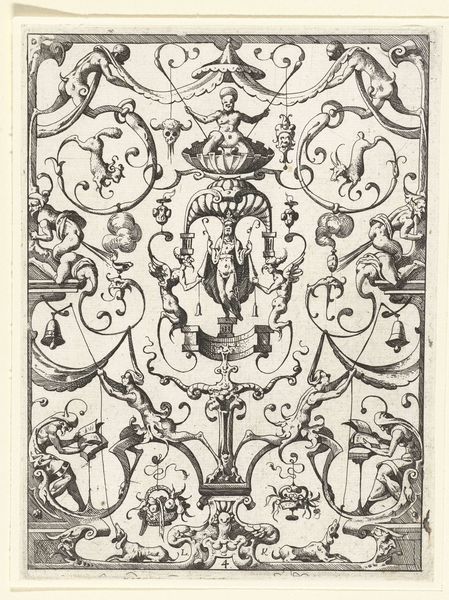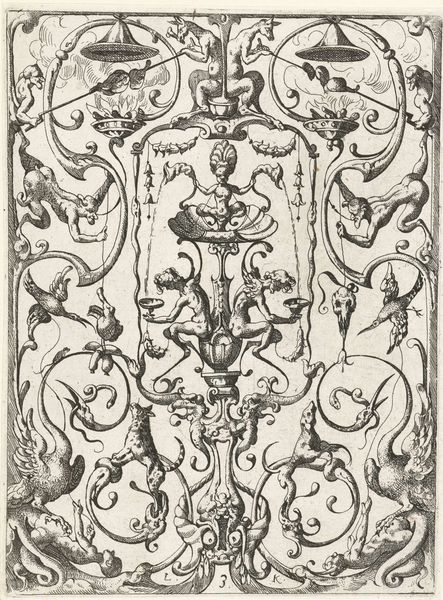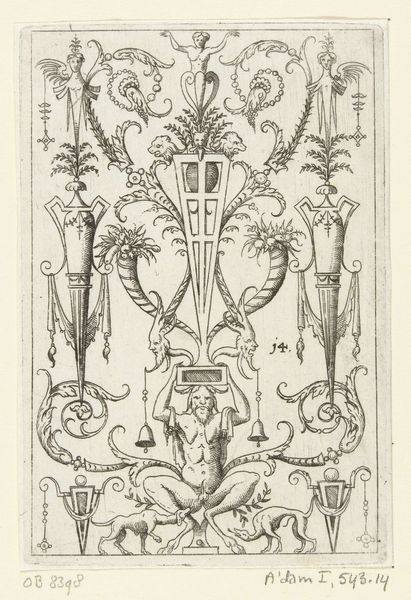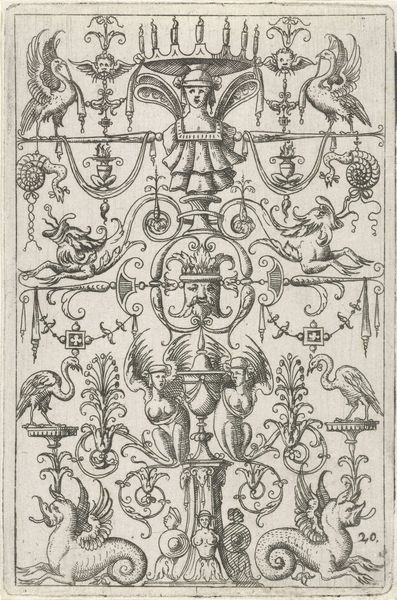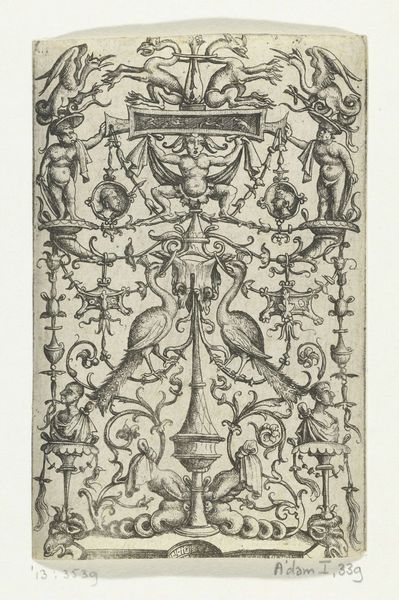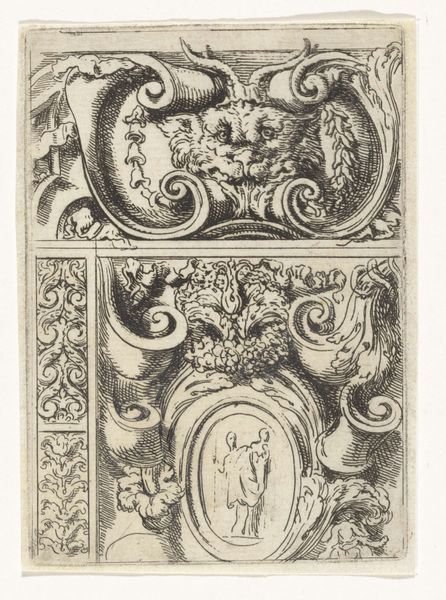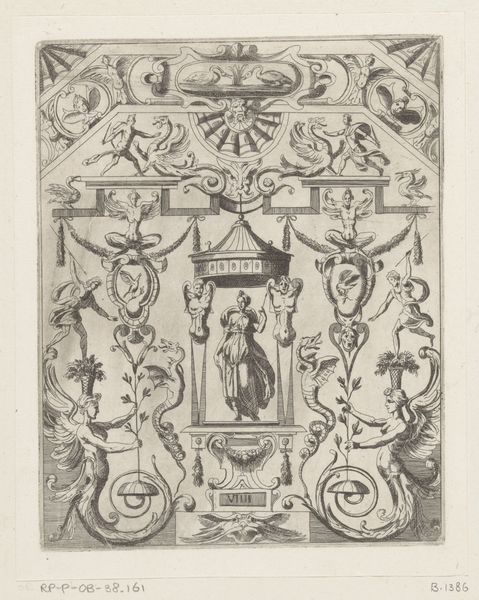
Kandelaber, met onderaan het bovenlichaam van een gevleugeld wezen op een sokkel c. 1525 - 1594
0:00
0:00
Dimensions: height 106 mm, width 70 mm
Copyright: Rijks Museum: Open Domain
Editor: This is Hans Sibmacher's "Candelabra, with the upper body of a winged creature on a pedestal at the bottom," likely made between 1525 and 1594, created using ink, pen, and engraving techniques. The density of figures feels very... intense. How do you interpret this work, focusing on its formal elements? Curator: The complexity is indeed striking. Note how the artist uses line, almost obsessively, to create form and texture. Consider the way the figures intertwine, creating a visually dense surface that denies the eye a clear resting point. This deliberate manipulation of form results in a certain aesthetic tension. Editor: So the "tension" comes primarily from this dense interplay of line and form, rather than any narrative element? Curator: Precisely. Observe how Sibmacher repeats motifs – the winged creatures, the stylized foliage – creating a complex visual rhythm. It's less about what these figures *mean*, and more about how their arrangement affects the overall visual experience. Editor: It's interesting to consider it solely in terms of its visual architecture, how Sibmacher builds up these patterns. It challenges my urge to look for narrative first. Curator: It invites us to appreciate the pure skill and artistic choices employed to create this very ornate design. The variations in line thickness, the controlled chaos of the composition... these are the areas of primary interest. What have you gleaned from the conversation? Editor: I’ve shifted from searching for meaning in each character to appreciate the whole structure of lines, shadows, and its complex visual structure.
Comments
No comments
Be the first to comment and join the conversation on the ultimate creative platform.
